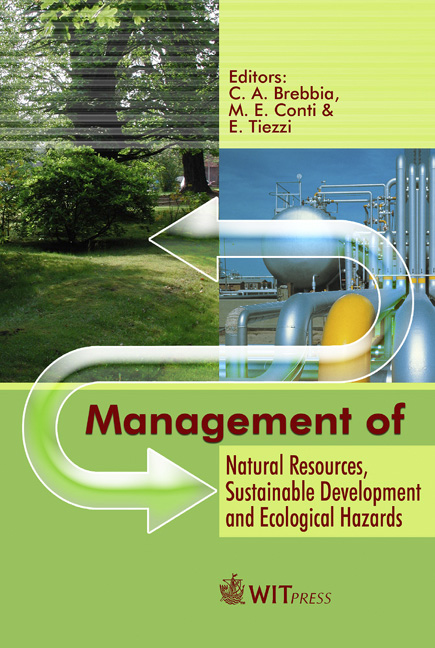Arsenic Pollution In The Southwest Of Tuscany: Monitoring Of Cornia Catchment Basin
Price
Free (open access)
Transaction
Volume
99
Pages
9
Published
2006
Size
1,407 kb
Paper DOI
10.2495/RAV060661
Copyright
WIT Press
Author(s)
F. Rossi, A. Donati, M. Rustici, B. Rugani & E. Tiezzi
Abstract
The territory of Colline Metallifere, in SW Tuscany, is characterized by the presence of strong arsenic anomalies. Some hypotheses, formulated in the last 20 years, based on geological and mineralogical factors have failed to explain the peculiar distribution of this toxic element in soil, fluvial sediments and ground water. Our research group has been studying for four years the problem of arsenic pollution in this district to investigate the origin and the mechanism of As diffusion in the environment. In particular we started a comparative study based on the extensive sampling of the stream sediments of the main waterways of Colline Metallifere (Pecora, Bruna and Cornia and their tributaries). In this work we focused our attention on the stream sediments and the soil of the Cornia basin. The comparative analysis of Cornia and the other rivers of the area, together with the investigation of historical series of data, provided important information about the origin of contamination of the territory and the impact of ancient mining settlements on this phenomenon. Keywords: arsenic pollution, Tuscany, geochemical investigation, elemental analysis, anthropogenic activity. 1 Introduction Arsenic is a naturally occurring element, with an average abundance that range from 1 to 10 mg/kg (dried soil) in the earth crust ranking as the 20th abundant element [1].
Keywords
arsenic pollution, Tuscany, geochemical investigation, elemental analysis, anthropogenic activity.





